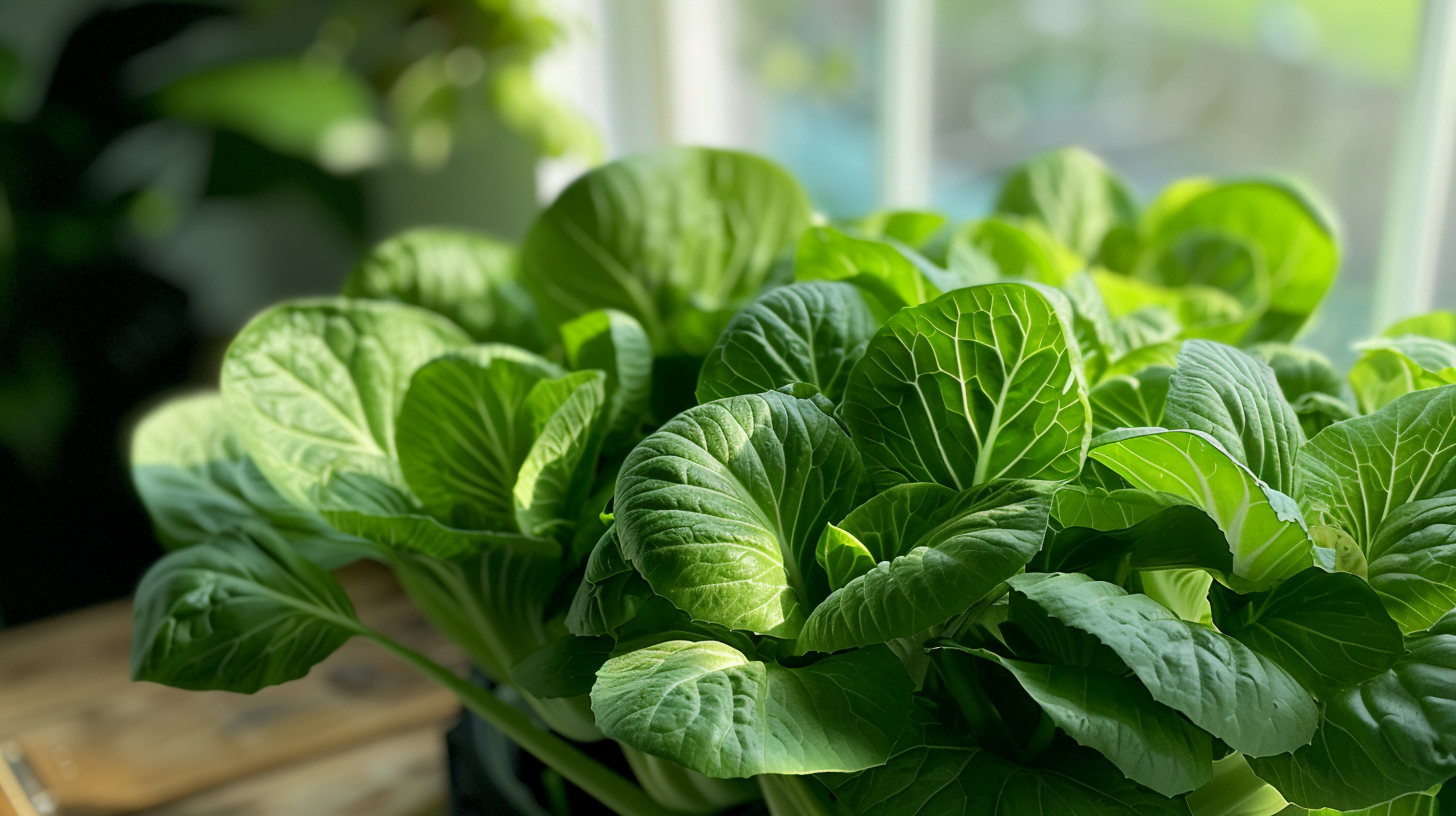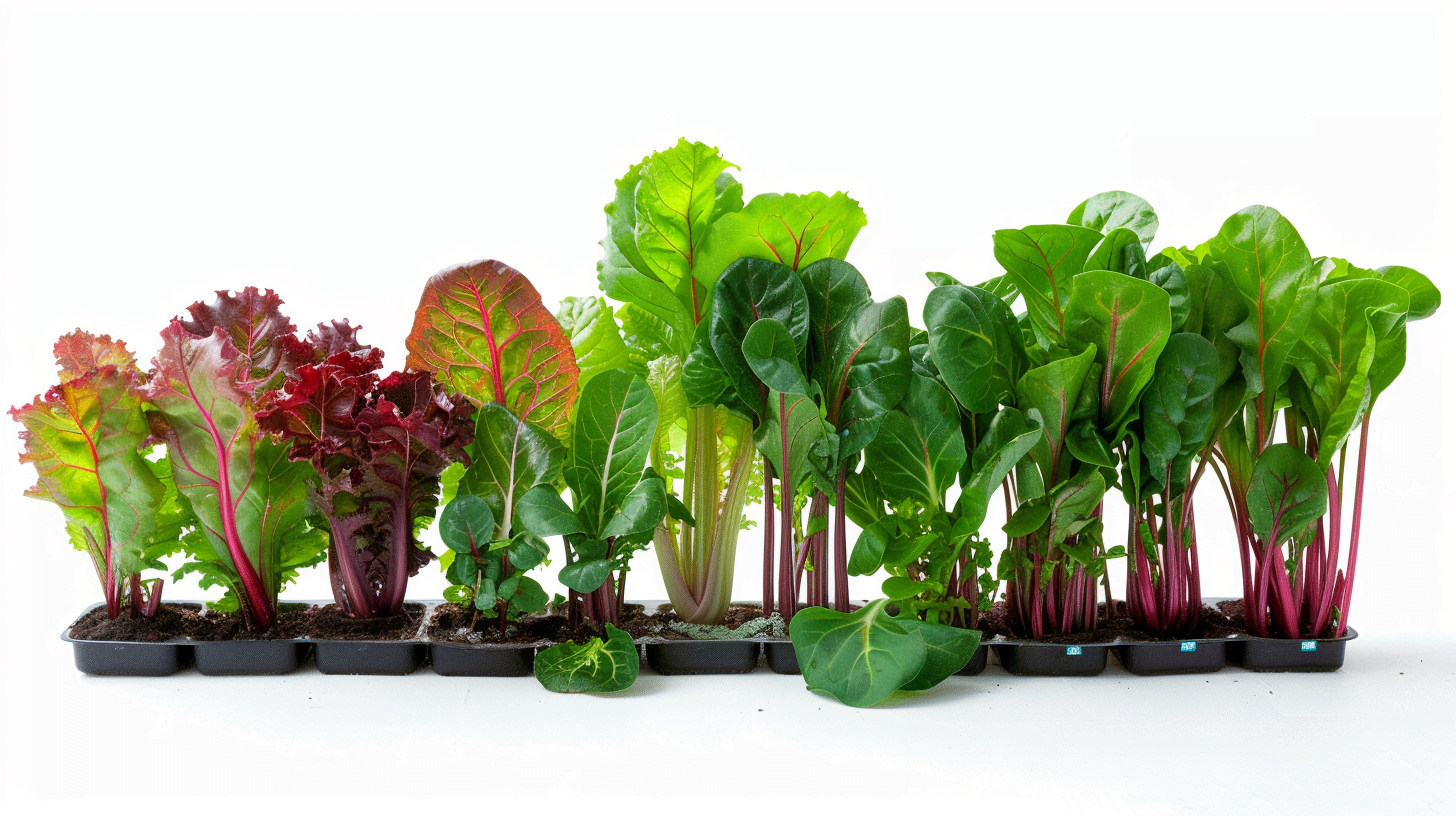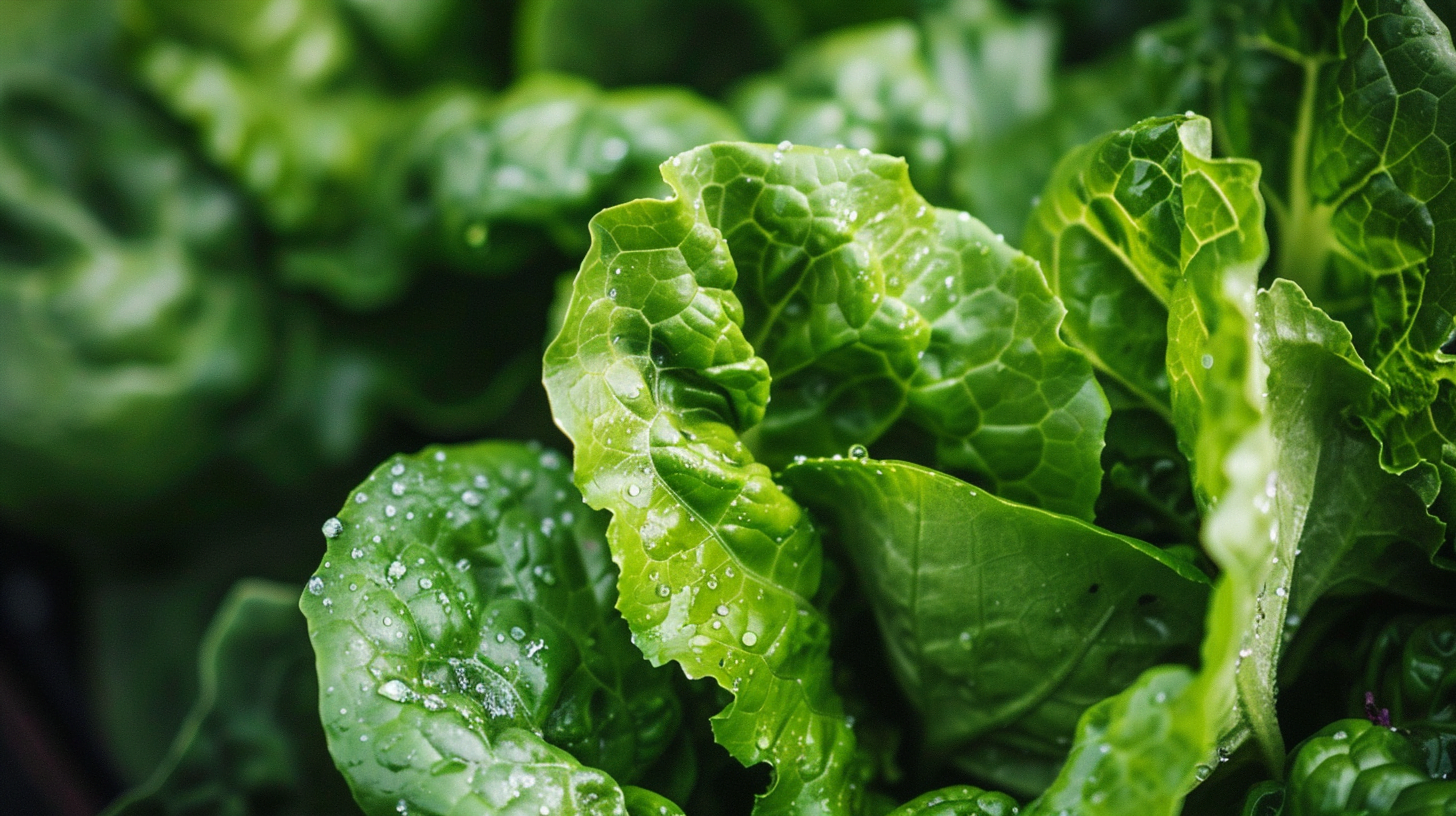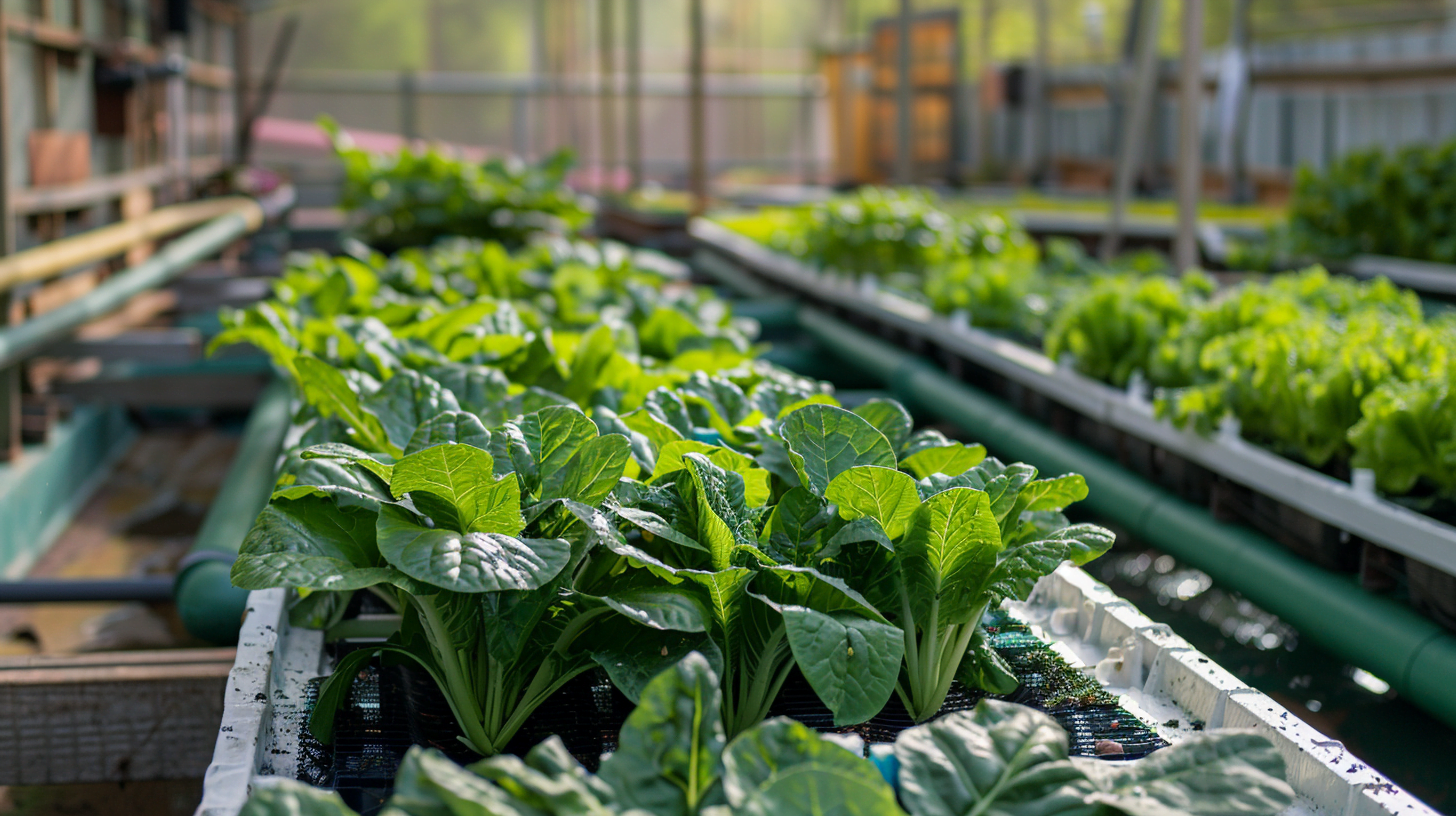Bok choy, also known as Chinese cabbage, is a highly nutritious leafy green vegetable that is a staple ingredient in many Asian cuisines. With its mild, sweet flavor and crunchy texture, bok choy is delicious stir-fried, added to soups, or even eaten raw in salads. But Can I Grow Bok Choy Hydroponically? you might be wondering, Yes you can!
While traditionally grown in soil, bok choy can also be grown hydroponically for faster harvest times, higher yields, and reliable growth year-round. If you want large, consistent harvests of pesticide-free bok choy, then a hydroponic system is the best way to grow this nutrient-dense veggie.
What is Bok Choy?
Bok choy originated over 5,000 years ago in ancient China, where it has been cultivated for centuries as a hardy, fast-growing crop. This versatile vegetable belongs to the Brassica family along with other nutritional powerhouses like broccoli, Brussels sprouts, cabbage, cauliflower, and kale.
There are several popular varieties of bok choy to choose from:
- Baby bok choy – The smallest and most tender variety. Baby bok choy has a sweeter flavor and soft crunch when cooked. The heads are typically no longer than 3-4 inches. Perfect for quick sautés or steaming.
- Shanghai bok choy – Also called baby Shanghai bok choy. Forms heads 6-8 inches tall with bright green leaves and juicy white stems. Maintains an enjoyable crisp texture even when cooked.
- Full size bok choy – The most common large variety. Matures to 12-16 inches tall and 5-7 inches wide. Tender leaves and crunchy wide stems. Ideal for getting full-sized heads.
- Napa cabbage – A larger, cylindrical, barrel-shaped head of bok choy with crinkly leaves. Provides big yields. Adds delicious crunch and moisture when fermented into kimchi.
- Choy sum – A non-heading relative of bok choy. Grown just for its tender greens and stalks. Excellent for stir fries.
No matter which bok choy variety you choose, you can expect an excellent source of essential vitamins and minerals:
- Vitamin C – A single cup of raw bok choy contains over 50% of the recommended daily Vitamin C intake. This powerful antioxidant promotes a healthy immune system.
- Vitamin A – Bok choy is high in beta-carotene, which the body converts into Vitamin A. Vitamin A supports eye health and aids cell growth.
- Vitamin K – Necessary for proper blood clotting, Vitamin K is abundantly present in bok choy leaves. Just one cup provides over 140% of your daily needs.
- Calcium – With 74 milligrams of calcium in every cup, bok choy is an excellent non-dairy source of this vital mineral for building and maintaining strong bones and teeth.
- Potassium – Proper nerve and muscle function rely on potassium. Bok choy serves up over 600 milligrams of potassium per cup.
- Folate – Also called Vitamin B9, folate is essential for new cell creation and preventing anemia. Bok choy provides significant amounts of this water-soluble vitamin.
With its stellar nutritional profile, it’s obvious why bok choy earned its classification as a superfood vegetable! When grown hydroponically, all of these compounds become even more bioavailable and usable for our bodies.
Benefits of Growing Bok Choy Hydroponically
Compared to conventional soil gardening, growing produce hydroponically offers several advantages that make it easier to achieve optimal plant growth and maximum yields. Here are the top benefits of choosing a hydroponic system for your bok choy:
Faster Grow Time
In an ideal hydroponic setup, bok choy can reach maturity and size up enough for harvest in just 30-40 days. Conversely, when grown in soil bok choy typically takes a minimum of 60 days from seed to harvest. The consistent moisture and readily available nutrients that hydroponic systems provide lead to significantly faster plant growth.
Higher Yields
With the right lighting and plant spacing, hydroponic systems can produce up to 4-5 times higher yields of bok choy per square foot than traditional soil methods. You can expect over 20 pounds of harvested bok choy per 10 square feet of grow space. Lacking any soil, all available room can be occupied solely by plants.
Avoid Soil-Borne Diseases
When grown in earth, bok choy is prone to fungal diseases and bacteria that live in the soil. Hydroponics entirely eliminate the risks of soil-borne pathogens. Carefully monitoring and adjusting hydroponic nutrient solutions prevents any harmful microbes from infecting roots.
Precise Nutritional Control
In hydroponics, you can expertly regulate the exact blend of minerals and nutrients the bok choy roots take up. This allows you to create an optimal nutrient profile to maximize growth rate, yields, and flavor. Such meticulous control over nutrition is difficult to achieve with soil fertility.
Grow Year-Round
With an enclosed hydroponic system and grow lights, you can cultivate lush bok choy year-round, regardless of outdoor temperatures or seasons. While soil gardens rely on warm seasons, hydroponics’ protected conditions let you grow bok choy endlessly.
Conserves Water
Hydroponics require up to 90% less water than soil gardening. Nutrient solutions are recirculated, rather than water being lost through runoff or evaporation from open soil. Going hydro is great for water-wise gardening.
With all of these advantages, hydroponics offer an excellent way to grow your own gourmet bok choy much more efficiently than planting in the earth alone.
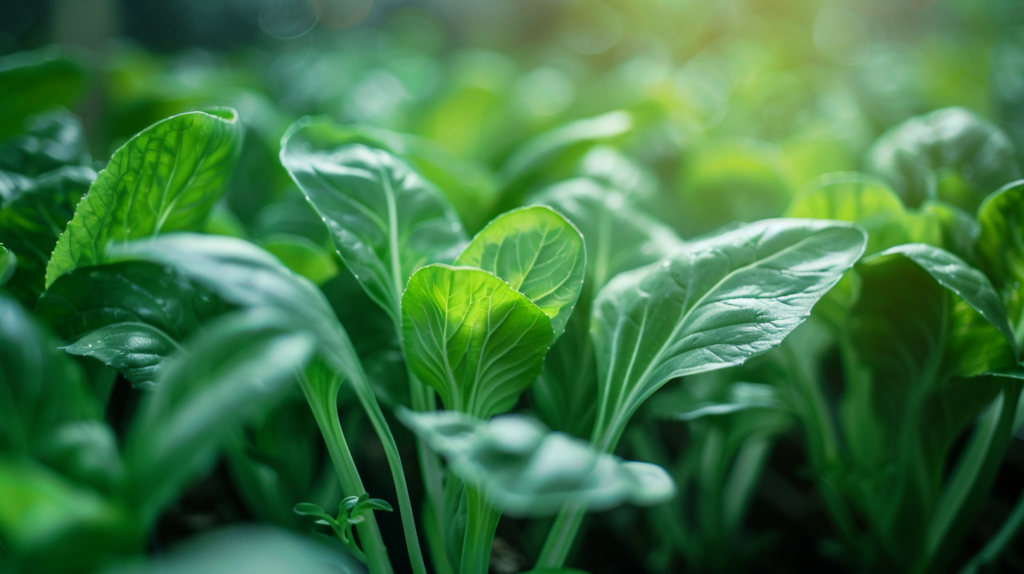
Selecting a Hydroponic System
If you want to maximize growth speed, yields, and healthy plants, choose an active hydroponic system for your bok choy. This means the plant roots will be provided with constant aeration, circulation of oxygenated water, and renewal of the nutrient solution. Recommended setups include:
Deep Water Culture (DWC)
Also called deep flow technique (DFT), deep water culture systems suspend bok choy roots directly in an aerated bath of nutrient solution. Oxygen enters via air stones connected to pumps. No growing medium is used other than a net pot.
How it works:
- Reservoir is filled with nutrient water plus air stones.
- Bok choy is placed into net pots with bottom in solution.
- As solution floods the roots, fresh oxygen keeps them healthy.
- An air pump continuously provides bubble circulation.
Pros of DWC:
- Maximizes growth rates due to excellent oxygenation.
- Relatively easy and inexpensive to setup.
- Allows for precise monitoring of root zone.
Cons of DWC:
- Needs 24/7 electricity to run air pump.
- Higher chance of root rot without proper aeration.
- More maintenance to monitor water levels.
Nutrient Film Technique (NFT)
In an NFT system, bok choy is placed into channels, gullies, or pipes that have a thin, continuously flowing stream of nutrient solution running through them. Just the roots make contact with the moving solution.
How it works:
- Angled growing channels allow gravity flow.
- Nutrient solution is pumped to top of channels.
- Bok choy spaced along channels in net pots.
- Shallow stream flows over roots and back to reservoir.
Pros of NFT:
- Simple design and relatively low maintenance.
- Constant flow oxygenates roots well.
-Allows for easy inspection of roots.
Cons of NFT:
- Susceptible to power outages disrupting flow.
- Root rot if flow is slowed and poor aeration results.
- Needs precise control of flow rate.
Drip or Ebb and Flow System
A drip system uses a timer or irrigation controller to intermittently drip nutrient solution directly onto the base of each bok choy through emitters or tubing.
Ebb and flow (flood and drain) works by temporarily flooding the grow tray with nutrient solution then draining it back to the reservoir several times per day.
How they work:
- Reservoirs pump to raised grow beds with plants.
- For drip systems, emitters drip solution onto roots.
- For flood and drain, beds flood with solution then drain.
- Allows stacking of vertical layers.
Pros:
- Very water efficient methods.
- Can be customized to your space.
- Modular components make expanding easy.
Cons:
- Blocked emitters or tubing can disrupt flow.
- Flood and drain systems can promote root rot if no medium.
While you’re free to experiment, we recommend choosing either the DWC or drip system for your first hydroponic bok choy cultivation. Both provide excellent growth and reasonable simplicity.
Equipment Needed
To build your bok choy hydroponic system, you’ll need the following components:
- Growing tray/chamber – This will contain the nutrient solution and house the bok choy plants. Use food-grade plastic containers, tubs, buckets, or purpose-built hydroponic systems.
- Reservoir – Stores and supplies the nutrient water. A separate tank or the lower section of your grow chamber. Ensure it’s light-proof.
- Pumping system – Required to move water from reservoir to grow chamber. Submersible pumps with adjustable flow work well.
- Piping/tubing – PVC, vinyl, or flexible tubing to carry and deliver water. Drip systems need narrow tubing.
- Net pots – Made from mesh or fabric, net pots contain the growing medium and roots while allowing contact with nutrient solution.
- Air pump & stones – Active aeration is essential. Air pumps and stones oxygenate the water and roots.
- Growing media – Use perlite, gravel, clay pellets, coconut coir, etc. to support seeds/seedlings in the net pots.
- pH testing kit – Crucial for monitoring water acidity/alkalinity levels. Most kits are liquid or litmus strips.
- Water pumps, lines, timers – Automate flow rates and cycles to simplify maintenance.
Following a diagram or video tutorial tailored to your chosen hydro system will make construction much easier. Don’t be afraid to start small and expand later.
Planting Your Bok Choy
You have two options when it comes to planting bok choy into your hydroponic system:
Seeds
Starting from seed gives you more variety options and allows sprouting many plants from a small seed packet. Here’s the process:
- Soak bok choy seeds in tepid water for 4-6 hours before planting to initiate germination.
- Fill net pots with your chosen growing medium, leaving 1-2 inches below rim.
- Gently press seeds 1⁄4-1⁄2 inch deep into the medium. For nursery pots, space 2″ apart.
- Keep pots moist until sprouts emerge in 5-7 days. Move under grow lights.
- Transplant the seedlings into your hydro system channels/reservoir when roots show through bottom of starter pots.
Seedlings
If you want mature bok choy faster, purchase seedlings. Look for young plants 3-6 inches tall in starter plugs, pots, or trays. Transplant carefully:
- Gently remove seedling with roots from the starter plug or pot.
- Rinse just the roots to remove any clinging soil. Keep foliage dry.
- Place into net pots filled with your clean hydroponic growing media.
- Immediately move net pot into your hydro system reservoir or channel.
For both seeds and seedlings, space young bok choy plants 6-12 inches apart in your hydroponic system to allow adequate room for full growth.
Maintain ideal conditions for robust bok choy growth:
- pH between 6.0-7.0
- Water temperature of 65-75°F
- EC/TDS of 800-1200 ppm
- Abundant oxygenation
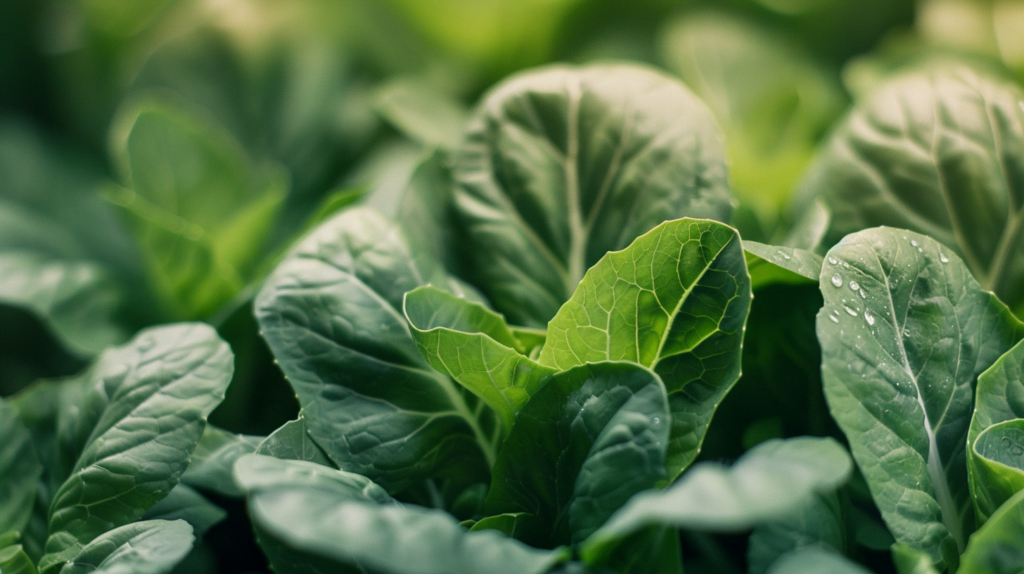
Caring for Your Bok Choy
Proper care and maintenance are crucial to keep hydroponic systems thriving and producing the best quality bok choy. Monitor these parameters closely:
Nutrient Solution
The synthetic mineral nutrition that feeds plants is the lifeblood of hydroponics. Keep your reservoir filled and refreshed:
- Top off reservoir – Check levels daily and add more nutrient solution to replace what plants absorb.
- Change nutrient weekly – Drain and replace tank contents weekly to replenish nutrients.
- Avoid algae – Light exposure causes algal growth. Paint reservoirs black or use opaque covers.
Oxygenation & Circulation
Proper aeration and water circulation are vital in active hydroponic systems.
- Run air pumps 24/7 – Use a timer or dual air pumps to prevent any air flow interruptions.
- Clean air stones monthly – Remove and scrub air stones to prevent clogging.
- Check water flow – Ensure pumps are providing steady circulation through your system.
Monitor pH
pH indicates the acidity or alkalinity of your nutrient solution. Bok choy prefers a slightly acidic pH between 6.0-7.0. Use pH test strips or drops to check levels:
- Test pH daily, aiming for 6.5 pH.
- Add pH Down solution if too alkaline. Use pH Up if too acidic.
- Let solution circulate 30 minutes after adjusting to stabilize.
Maintain Lighting
Light is the energy source powering photosynthesis. For robust bok choy growth provide:
- 14-16 hours of daily light under full spectrum LED grow lights.
- 5000-7000 lumens intensity at plant level for leafy greens like bok choy.
- Keep lights 12-18 inches above plants. Raise as bok choy grows taller.
Control Pests
Bok choy pests include aphids, cabbage loopers, leaf miners, slugs, and fungus gnats. Prevent infestations with these IPM methods:
- Quarantine new plants to avoid introducing pests.
- Remove any infested foliage immediately to prevent spreading.
- Use floating row covers as physical barriers.
- Apply organic sprays such as insecticidal soap, neem oil, or spinosad at first sighting.
- Introduce beneficial insects like ladybugs, lacewings, or preying mantis to feast on pests.
- Set out yellow sticky traps to catch adult life stages.
With preventative practices, close observation, and prompt organic treatment, you can keep ahead of any potential pest problems.
Avoid Diseases
Proper maintenance and environment management prevent most hydroponic plant diseases. Be vigilant to avoid:
Root rot – Caused by lack of oxygen to roots. Ensure adequate water circulation and sterilize systems between grow cycles.
Powdery mildew – This fungal disease manifests as a white powdery coating on leaves. Improve air flow and reduce humidity levels.
Tip burn – Brown dried edges on leaves indicating lack of calcium or over-fertilization. Test and adjust nutrient solution.
By swiftly removing any diseased plant material and disinfecting equipment, diseases can be contained before spreading.
With attentive care and fine-tuning, your hydroponic bok choy will flourish!
Harvesting Bok Choy
Determining when to harvest bok choy can be challenging for beginners. Look for these signs your bok choy is mature and ready for picking:
- Firm, dense heads that feel heavy with moisture when gently squeezed. Soft, spongy heads need longer growth.
- Leaves reach 5-7 inches tall, with baby varieties maxing out at 3-4 inches high.
- Stalks thicken to 1-1.5 inch diameter, with baby bok choy stems staying under 0.5 inch.
- Interior leaves start overlapping in a folded cone shape around the center.
- Flavor is mild without bitterness. More mature plants take on a stronger, brassica flavor.
For full size heads, harvest the entire plant at soil level when stems are around an inch thick. Baby bok choy can be harvested multiple times, cutting just the outer leaves while inner leaves continue producing.
Use a sharp knife or garden shears to cut each bok choy off at the base of the stem. Angle the cut slightly to retain as much of the tender bottom stem as possible.
Rinse freshly picked bok choy under cool water to remove any remnants of the hydroponic nutrient solution. Pat dry with towels before storage.
Storing Bok Choy
Like most leafy greens, bok choy is highly perishable after harvesting. Proper storage is key to prolonging shelf life after harvest. Follow these guidelines when storing your freshly cut bok choy:
- Rinse under cool water and gently shake off excess moisture. Never store greens wet.
- Wrap in paper towels or clean dish towels to absorb condensation and humidity during storage.
- Place in perforated plastic bags and remove as much air as possible before sealing. Poke several additional holes in the bag.
- Refrigerate immediately, ideally at 32-35°F. Use within 3-5 days for optimum sweetness and crunch.
- Avoid freezing bok choy as the leaves will wilt upon thawing. Fermenting into pickles preserves crunchy stalks longer.
Follow strict cold chain handling and bok choy will retain its signature ruffled leaves and satisfying snap when you’re ready to enjoy!
Expected Yields
With the faster growth that hydroponics facilitate, you can yield impressive amounts of bok choy within as little as 1-2 months. Expect approximately:
- 10-14 heads per square foot at maturity spacing plants 8 inches apart.
- 11-16 ounces per head for full size varieties like regular bok choy or Napa cabbage.
- 4-6 ounces per head for smaller Shanghai or baby bok choy.
- 20-30 pounds per 10 square feet of growing area is common in optimal home hydroponic systems.
With multiple staggered harvests, a single hydroponic setup can produce over 50 pounds of bok choy yearly!
Conclusion
Growing bok choy hydroponically is an excellent option for gardeners interested in producing their own super healthy greens. With a well-designed system, you can achieve faster, more bountiful harvests of this highly nutritional brassica. Active hydroponic methods like DWC and drip provide ideal conditions for tender, crisp bok choy. By giving your plants attentive care and monitoring their needs, you’ll be rewarded with armloads of farm-fresh bok choy.
We hope this comprehensive guide provided you all the information needed to successfully start growing bok choy or any leafy greens hydroponically. Let us know if you have any other questions arise on your journey to learning hydroponic gardening. We’re happy to offer troubleshooting advice to help you get the most out of your system. Wishing you an abundantly green, crunchy, and flavorful bok choy harvest!
